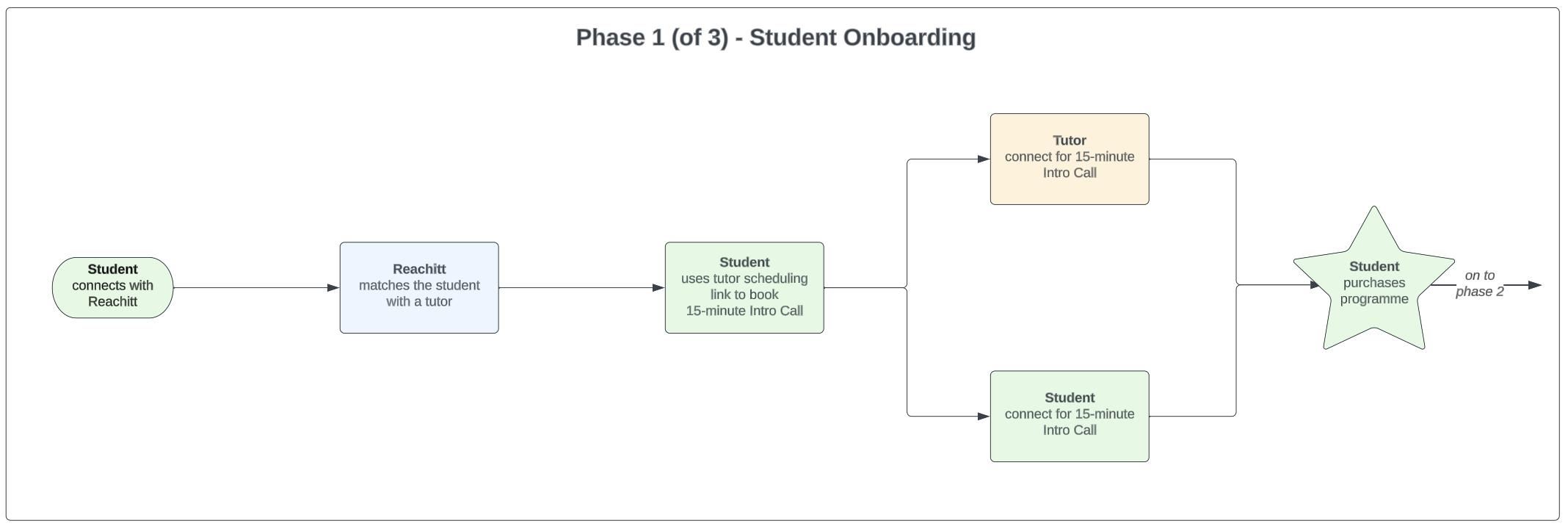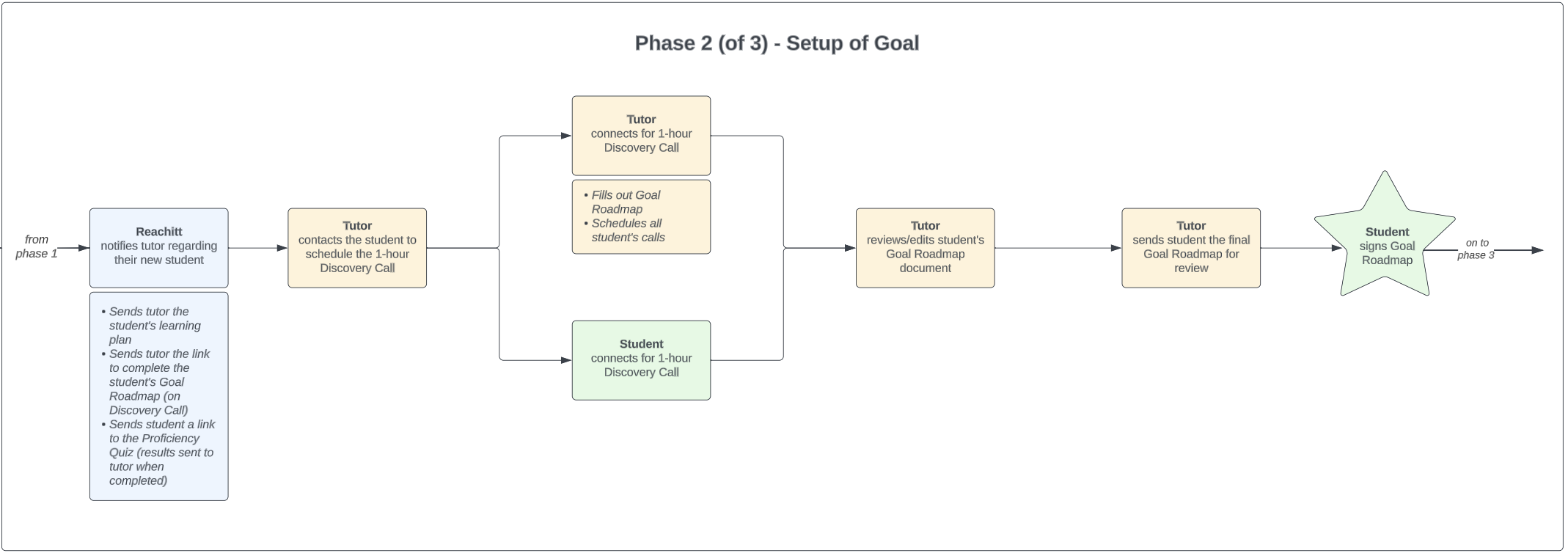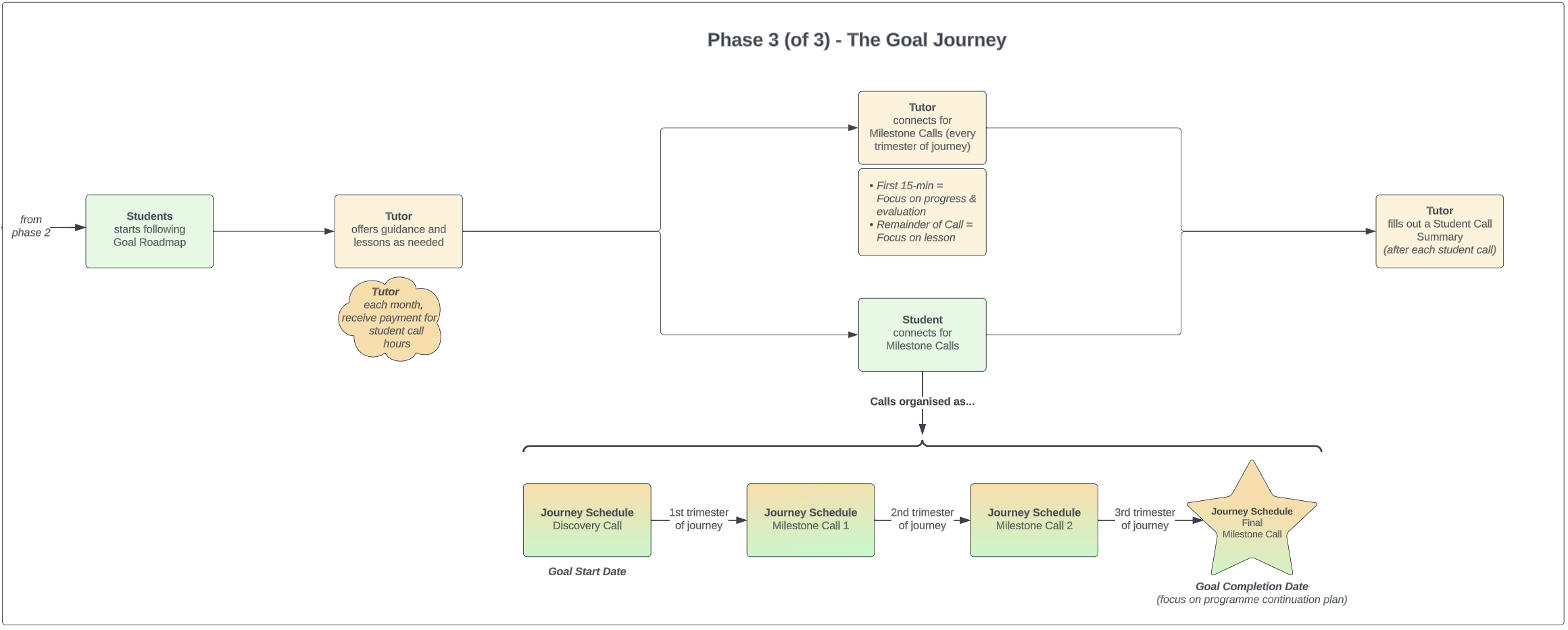The tutor training hub will provide all the information you need to be a successful Reachitt tutor and help students reach their goal. Please review the content and complete the Reachitt tutor training questionnaire to be fully certified as a Reachitt tutor. Print the tutor checklist to help you along the way.
Reachitt tutors set clear, measurable goals with students and work with a singular focus towards these leveraging the latest tools and technologies.
The 4 Pillars of the Reachitt Framework (DAMP):
3 Stages to Student Onboarding (before package purchased):
Stage 1: The student provides information to create a personalised learning plan, which is done free of charge. The student is matched with a tutor who meets their needs.
Stage 2: An introductory call with a tutor, lasting about 15 minutes, takes place to discuss the offerings of both the tutor and Reachitt, aligning them with the student’s goals.
Stage 3: The student purchases a package of sessions to initiate the learning journey. Tutors will be provided a view of how many sessions the student has paid for.
3 Stages to the Student Goal Journey (after package purchased):
Stage 1: A placement test is conducted to assess the student’s current level of knowledge. For some languages where a placement test is not available the tutor should conduct current level testing in the discovery call.
Stage 2: A discovery call is held with the student by the tutor to gain a deeper understanding of their specific goals. The tutor will create the roadmap and detailed learning plan after this call using generator tools.
Stage 3: Regular lessons are conducted, and check-in calls are held to measure the student’s progress against the roadmap. The final goal date will be the last check-in session.
Foundation areas are breakdowns of the overall goal into component parts and are specific to student goal.
Our roadmap tool offers a pre-defined set of foundation areas but allows personalisation to suit individual needs. To optimise learning, we recommend focusing on 3-5 foundation areas.
See the image below for example foundation areas based on the goal motivation:
Travelling & Moving Abroad | Career Advancement | Mental Growth | General Language Interest |
| 1. Listening accuracy | 1. Reading accuracy | 1. Reading accuracy | 1. Reading comprehension |
| 2. Listening speed | 2. Writing accuracy | 2. Reading speed | 2. Writing accuracy |
| 3. Speaking accuracy | 3. Speaking accuracy | 3. Writing accuracy | 3. Speaking accuracy |
| 4. Speaking speed | 4. Listening accuracy | 4. Writing speed | 4. Listening accuracy |
| 5. Reading Comprehension | 5. Conjugation | 5. Commitment level | 5. Pronunciation |
Measurement methods in the context of language learning are techniques used to track the progress of students over time.
The roadmap creation tool proposes measurement methods or you can create your own.
Here are three example measurement methods for different foundation areas:
It’s important to ensure that the chosen measurement methods are consistent over time, allowing for a fair and accurate comparison of progress.


The Reachitt free learning plan is an online tool that generates a preliminary plan outline to help students in their goal achievement.
While it provides a glimpse into the Reachitt approach, the free learning plan is not fully personalised to the individual student. Instead it offers a general learning plan based on some simple information provided by the student about their goal.
As a tutor, you will receive access to the student’s learning plan, allowing you to utilise it as a starting point and build from to create a plan specifically tailored to their specific needs and objectives. This ensures a more personalised and effective learning experience for the student.
For the first 15-minute intro call with the student, follow these steps:
The Reachitt placement test is a standardised assessment that measures a student’s current level in a specific language.
It identifies their proficiency and helps determine the gap between their current level and their desired goal. This information is valuable for tailoring personalised learning plans and setting realistic milestones.
The placement test is currently only available for some languages. More will become available in the near future as more languages become available through Reachitt.
To run effective discovery calls with students, follow these steps to gather essential information and tailor the language learning experience to their specific needs and goals:
The Reachitt roadmap is a detailed plan that outlines how the student will make progress from their current level to their desired proficiency or goal. See example here:
To populate the roadmap, follow these steps:

When running language sessions, adapt your teaching style to meet the student’s needs and focus on the areas specified in the roadmap. Provide comprehensive instruction, monitor progress, offer feedback, and encourage practice and reinforcement.
Tailor the sessions to the individual student, creating a supportive and engaging learning environment.
Progress check-ins are specific points in the learning journey where the student’s progress is measured. Each foundation area has its own measurement method, which is recorded in the original roadmap. The progress score is evaluated against these methods and recorded in the roadmap.
A PDF version of the updated roadmap is then sent to the student to review their progress. Check-ins ensure regular evaluation and tracking of the student’s advancement, keeping both you and the student informed about their journey towards their language learning goals.
To measure the progress of the student, there are several options available:
To run progress check-in calls effectively, follow these steps over the first 15 minutes:
The remainder of the call should be used for normal lessons.
Regarding homework, use your judgement and discretion to align it with the student’s goals and needs.
On the final goal date, follow these steps:
Discuss the available options with the student and provide guidance based on their preferences and circumstances.

